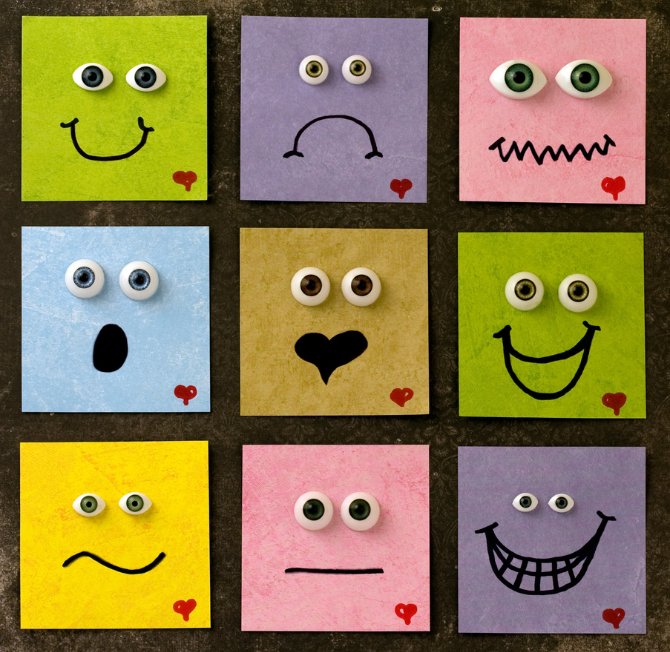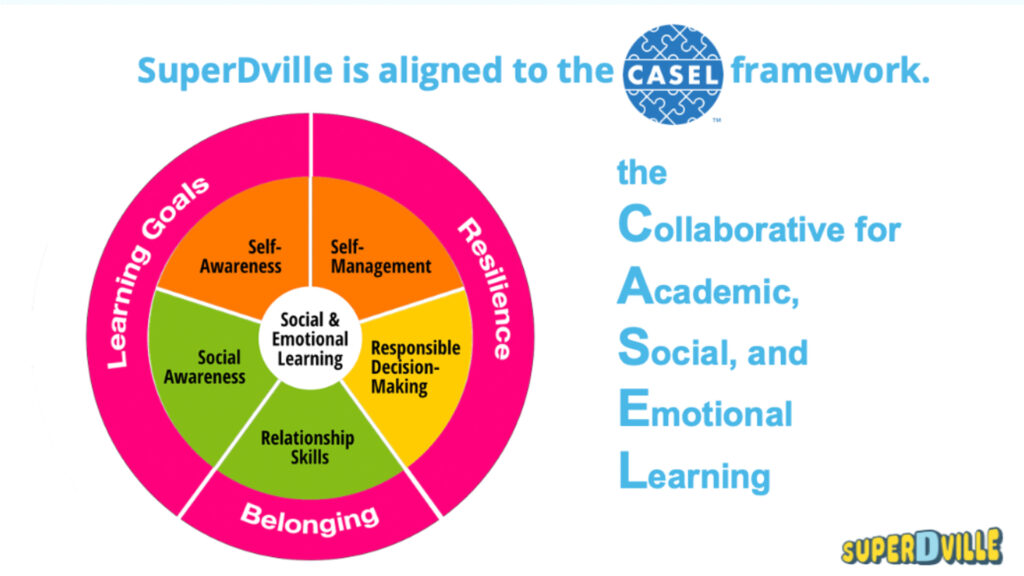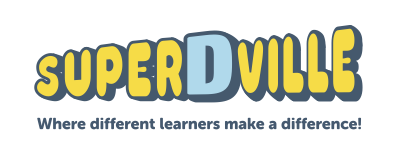Educators can use targeted instruction to integrate SuperDville’s SEL curriculum into their classrooms. This will support the academic, social, and emotional competence not only of students with Learning Differences but the whole classroom community.

How Educators Use Targeted Instruction
The concept of targeted instruction will be familiar to educators and parents, especially when it comes to teaching children to read.
It’s the opposite of “one size fits all” education, and it works!
Using classroom observation and diagnostic tools, educators can pinpoint areas of growth for each student. Using that data, they can address student challenges.
Targeted instruction doesn’t just help students who are struggling, it can help the whole classroom community.
With repeated and explicit instruction, students who are struggling can engage with a concept until they understand it. Students who already have a grasp of the concept can apply it to more complex situations.
At SuperDville, we’ve taken a similar targeted approach when creating our Social Emotional Learning curriculum for kids with Learning Differences. While designed specifically for kids with LD, classmates without LD will also benefit.
The Importance of SEL for Kids with Learning Differences
One in five students has a learning difference. In addition, many students with LD spend up to 80% of the school day in general education classrooms. (More “by the numbers” information on children with Learning Differences is available through Understood.org.)
Megan Turner is a Reading Specialist and SuperDville’s Education Program Manager. She is passionate about providing equitable access to education for all students, including the one in five with Learning Differences.
“Students with LD might struggle with anxiety or depression,” Megan shares. These issues, along with the shame that many children with Learning Differences feel, can lead to feelings of low self-esteem in academic and social space.
In fact, children with Learning Differences are more likely than their peers to struggle with their mental health. When those same children experience difficulty communicating their feelings to family and peers, it can lead to frustration and isolation.
We know that all kids benefit from SEL. It can help kids build confidence, teach them to manage their feelings and guide them in advocating for themselves and others.
For kids grappling with the negative self-image of having LD, a targeted Social Emotional Learning curriculum can be life-changing!
For kids grappling with the negative self-image of having LD, a targeted Social Emotional Learning curriculum can be life-changing!
This is where SuperDville’s SEL curriculum can help!
SuperDville bases all episodes, lesson plans, and activities on child-development research and educational technology best practices.
We aligned our program with the five SEL competencies developed by CASEL, the Collaborative for Academic, Social, and Emotional Learning. The SuperDville research team integrated three additional skills to help foster the social-emotional development of students with LD.

This image is of the CASEL Framework diagram, also known as the CASEL Wheel. At the center of the circular diagram is a white circle labeled “Social and Emotional Learning”.
Using Targeted SEL Instruction with SuperDville
Ms. Turner has seen firsthand the benefits of intentional, targeted instruction in the classroom. Educators can use these same tactics with Social Emotional Learning.
In a recent presentation to elementary school leaders, Ms. Turner shared,
“Just as we see with reading instruction, all students, but particularly those with learning differences, benefit from explicit and repeated instruction.”
At SuperDville, we’ve built our curriculum’s sequence around this explicit and repeated instruction concept. Each episode’s lesson plan presents multiple opportunities for students to explore its SEL themes. Guided activities encourage ownership of concepts through role-play, dialogue, art, movement, and writing. This prepares students to use SEL skills in their own lives.
Educators can complete SuperDville lessons in order or use targeted instruction and choose episodes based on relevant themes. These themes include Learning Goals, Self-Acceptance, and Responsible Decision Making.
For example, a fifth-grade teacher might want a lesson focusing on Perseverance and Confidence. They could select the third-grade episode “Never Give Up”.
In the episode, Jace shares his disappointment about getting a low score on a spelling test. Discouraged, he says he doesn’t know why he even bothers trying. With the help of a flashback, a magic treasure chest, and a VERY special pair of glasses, Jace’s SuperD! friends encourage him to never give up.
Just as with targeted instruction for reading, this sort of targeted instruction for SEL benefits the whole classroom community.
“You might have a student that seems popular and seems like they’re connecting with other kids.” Ms. Turner explains, “But they might not know what to do if a friend doesn’t want to play with them.”
The explicit skills taught through SuperDville’s SEL curriculum can help all students manage their feelings around peer-to-peer interactions.
Want to check out “Never Give Up” and its accompanying activities for free? Click here!
Try SuperDville’s Targeted SEL Curriculum for Free!
SuperDville makes it easy for educators to incorporate targeted SEL instruction for students with learning differences. This helps not only kids with Learning Differences but everyone in class.
Try two sample lessons for free!
We’re offering one free Super D! Show lesson for elementary schoolers and one free W.U.N.D.R. lesson for middle schoolers. This includes the episode, discussion prompts, and activities with video intros.
Using SuperDville is as easy as 1… 2… 3!
1. Tune In!
Students watch an episode of our live-action video skit series starring a cast of kids with learning differences. The Super D! Show for elementary school kids or W.U.N.D.R. for middle schoolers. Or, educators can share one of our “Tips” videos featuring peer-to-peer advice and tips from our cast.
2. Chat about what you’ve seen!
You can use the episode-specific questions we provide to help kids engage with the episode’s themes. Alternatively, you can think up your own, like, What was the video about? What was your favorite part? How did the SuperDivlle kids solve their problem? Could you use the same strategies in your own life?
3. Activity time!
Every episode of The Super D! Show and W.U.N.D.R. come with four hands-on activities for your classroom. Each activity comes with a peer-to-peer video intro from a cast member explaining the activity. Plus, every “Tips” video includes an activity. Complete activities as a class, in small groups, or one-on-one with a student and educator.
Want to check out an episode of W.U.N.D.R. and accompanying activities for free? Click here!
